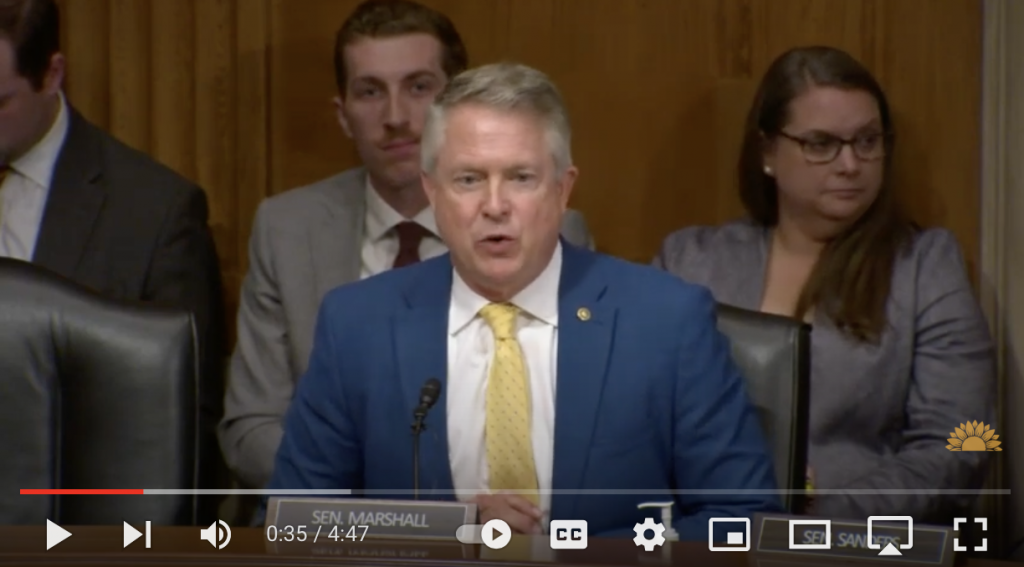- June 12, 2024
Senator Marshall Introduces Legislation Requiring Labor Department To Implement Key Performance Indicators
Washington, D.C. – U.S. Senator Roger Marshall, M.D. introduced the Expedited Performance Indicator Act, legislation that would require the Department of Labor (DOL) to implement its Primary Indicator of Performance in the Workforce Innovation Opportunity Act (WIOA) within six months of enactment. This legislation is being introduced as part of a larger WIOA reform package from members of the HELP Committee.
These indicators are intended to provide clear job training benchmarks, and set expectations for state workforce boards that provide services to their constituents. The bill additionally requires the DOL to supply technical assistance to help workforce boards meet these goals.
“If you can’t measure it, you can’t manage it,” Senator Marshall said. “DOL needs to provide clear cut goals and guidance for state workforce boards so they know what they are expected to provide the job seekers coming through their doors. Adding this bill to WIOA reforms will be critical to measure the performance of workforce boards across the nation.”
Since its first authorization in 2014, the six main indicators of performance haven’t been fully implemented, resulting in incomplete performance data being sent to the DOL. This legislation will ensure the DOL completely implements its performance indicators in a timely manner, thus providing better information to stakeholders on the success of WIOA programs across the nation.
This bill has been endorsed by the Kansas Association of Workforce Boards.You may click HERE to read Senator Marshall’s full bill text.

Senator Marshall provided remarks during a Senate HELP committee on WIOA and this legislation. You may click HERE or on the image above to watch Senator Marshall’s full remarks.
Highlights from Senator Marshall’s remarks include:
On the importance of timely implementation of WIOA performance indicators:
Senator Marshall: One of my sayings, if you can’t measure it, you can’t manage it. If you don’t have the data timely, it doesn’t do me any good. As we work through this WIOA authorization, we have a bill that would require the Department of Labor to implement performance indicators within six months of enactment and provide monthly technical assistance to local workforce boards. Can you just give me your perspective on the importance of that timely reports and implementations?
Dr. Bradley, Ph.D., Jobs for the Future: That’s an excellent question, and that’s been one of the issues in the system is data lag. The reason that up to date, more real time data is so important is because things change quickly, and you want training providers and workforce boards to be able to respond to what’s happening now, not describing the situation six months ago. And also, in terms of understanding training providers that you know, have positive outcomes, if there’s a year or two years lag of that, and they’re not a good training provider, they’re not getting good results, you want to know that sooner rather than later because of good stewardship of public dollars in the WIOA system. So it’s really important both from an agility standpoint, but also to know what’s working.
On the value of short-term Pell Grants:
Senator Marshall: Mr. Dickerson, my wife and I are community college graduates – so proud of my community colleges and technical colleges, and their ability to flex from moment to moment. In a rural community where there’s agriculture, the one community college has the diesel mechanic school. Maybe where the wind energy is popping up, a community college quickly offers a two year degree in wind energy and where there’s manufacturing, maybe it’s a focus on welding and other skills like that. How do you see the opportunity for short term Pell Grants in those types of programs? Is that something that would be a good idea, short term Pell Grants?Mr. Dickerson, Midsouth Extrusion: Yes, sir. Absolutely. That’d be a great opportunity for our adult population to get into the workforce faster through certified programs. Now, the other part of that is, yes, the funding is available, but do you have industry leading those discussions and developing those programs? On the other side of it, I think that’s a critical aspect that can’t be overlooked.
